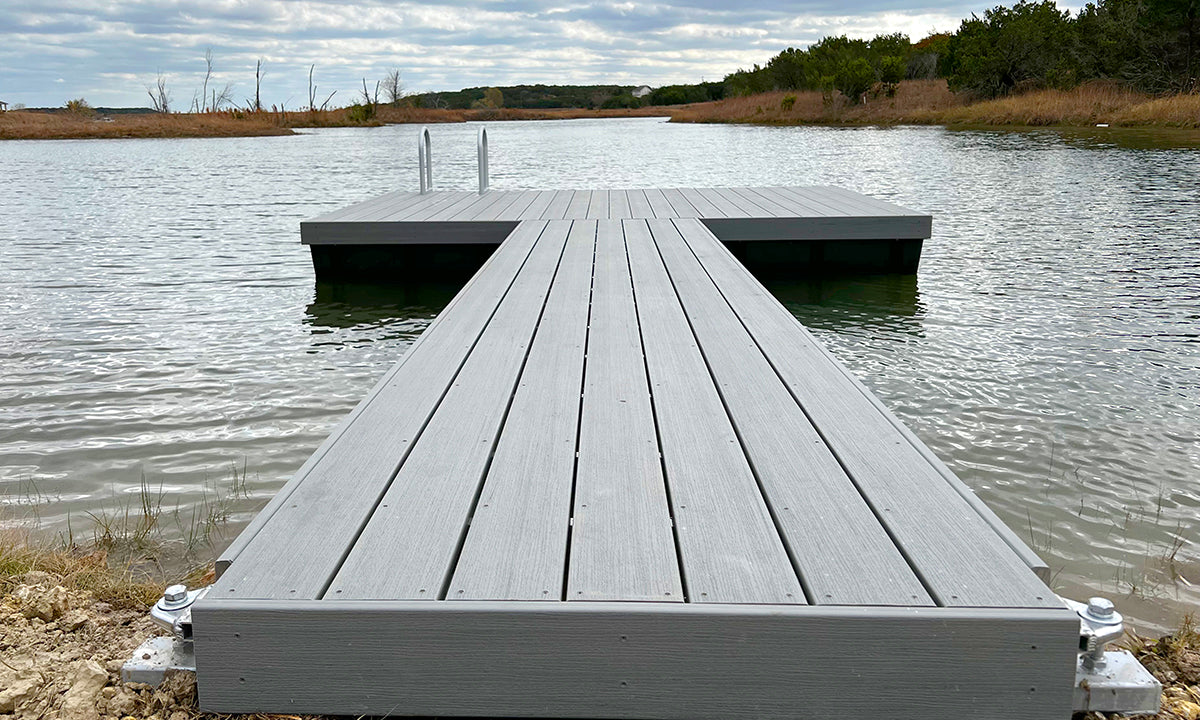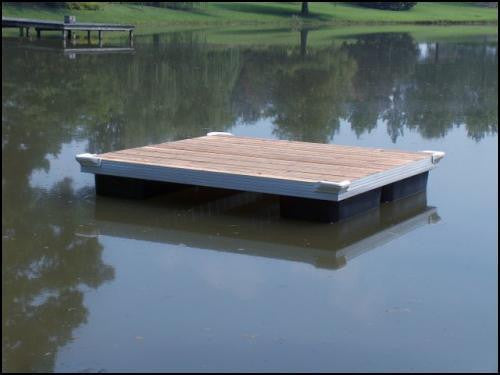The Value of Quality in Floating Dock Builder Option for Lasting Docks
The Ultimate Guide to Selecting the most effective Floating Docks
Picking the suitable floating dock needs a thorough understanding of different elements that influence both performance and long life. Elements such as dock kinds, materials, and essential attributes considerably influence your decision-making procedure.
Recognizing Floating Dock Types
When picking a drifting dock, it is necessary to understand the various types available, as each offers distinct functions and applications. Floating docks largely fall into 3 classifications: modular, fixed, and pontoon docks.
Modular docks are composed of private sections that can be quickly constructed or reconfigured, making them excellent for altering water degrees and varied usages, such as leisure activities or business operations. Their flexibility permits personalization based upon specific requirements.

Pontoon docks are defined by their buoyant structure, often made up of multiple pontoons that offer security and support. They are particularly well-suited for larger vessels and are commonly used in marinas or for waterside properties. Understanding these types aids in picking one of the most suitable floating dock to satisfy particular needs, ensuring optimum functionality and safety.
Key Materials for Sturdiness
Selecting the appropriate products for floating docks substantially effects their sturdiness and longevity. The most usual materials consist of wood, plastic, steel, and composite products, each offering distinct benefits and restrictions.
Timber, often preferred for its visual allure, needs regular upkeep to withstand dampness and degeneration. Pressure-treated lumber can enhance resistance to rot, however it might still be at risk to bugs and weathering.

Plastic docks, constructed from high-density polyethylene (HDPE), are resistant to deterioration, UV radiation, and impact, making them a prominent selection for coastal atmospheres. Their lightweight nature likewise assists in easy installment and moving.
Metal docks, generally built from aluminum or galvanized steel, give extraordinary strength and durability. They are immune to corrosion, particularly when dealt with, but may need additional insulation to stop warm buildup in warm climates.
Composite materials, incorporating timber fibers and plastics, supply the advantages of both timber and plastic, resisting wetness and fading while requiring minimal maintenance. - floating dock company
Ultimately, the choice of materials should straighten with environmental problems, planned usage, and upkeep choices to guarantee the floating dock stays useful and aesthetically pleasing gradually.
Essential Functions to Think About
While the choice of materials is crucial, taking into consideration essential functions for floating docks is just as crucial to make certain optimum efficiency and user fulfillment. One crucial attribute to assess is the dock's buoyancy capability, which identifies exactly how much weight it can support without immersing. floating docks. This is vital for fitting boats, individual watercraft, and even leisure tasks
Furthermore, transportability is a substantial consideration. Depending upon your requirements, you might want a dock that is simple to transport and take apart, particularly if you intend to transfer it seasonally. Stability is another vital function; a well-designed floating dock needs to minimize motion brought on by wind and water currents, supplying a safe platform for users.
Safety attributes, such as non-slip surfaces and rounded sides, are also important to stop accidents, especially in damp conditions. Consider the schedule of devices, such as bumpers, cleats, and ladders, which can enhance the functionality of your dock.
Installment and Maintenance Tips
Establishing and maintaining a floating dock calls for careful planning and focus to detail to ensure its durability and optimal efficiency. Begin by selecting a proper location browse around these guys that lessens exposure to strong currents and waves, which can trigger damage. Make sure that the water depth suffices for the dock's height and that it is secured securely to stop motion.
Throughout setup, follow the manufacturer's standards very closely, as incorrect assembly can endanger security. Usage premium materials resistant to corrosion, such as light weight aluminum or dealt with wood, to improve sturdiness. On a regular basis examine all parts, consisting of floats, ports, and anchoring systems, for indicators of damage or wear.
Maintenance is vital for expanding the life of your dock. Clean the surface areas regularly to stop algae accumulation and look for any kind of loose installations that may require firm. If your dock utilizes flotation protection tools, guarantee they continue to be complimentary and intact from slits. Additionally, take into consideration using safety coatings to wood parts to lower weathering impacts. By adhering to these setup published here and upkeep tips, you can appreciate a useful and reputable floating dock for several years to find.
Budgeting for Your Dock
Budgeting for your dock is an essential step that can dramatically impact your overall satisfaction and financial investment in a waterfront residential or commercial property. Establishing a clear spending plan assists you navigate the numerous choices available and guarantees you make notified choices that straighten with your financial abilities.
Begin by identifying the size and style of the dock you call for, as these elements will significantly affect the price. Floating docks can differ significantly in price, relying on products, buoyancy, and functions like ramps and accessories. Study various suppliers and distributors to contrast rates and comprehend the marketplace value.
Along with initial costs, consider recurring costs such as maintenance, insurance coverage, and possible repair work. Assign funds for these recurring costs to stay clear of surprises down the line. It's likewise sensible to budget for any type of required permits or evaluations, which might be needed by neighborhood regulations.
Finally, keep in mind the prospective return on investment. A well-planned dock can enhance your property's value and charm, giving a favorable economic impact in the lengthy term. By budgeting effectively, you can guarantee that your dock satisfies your needs without compromising your economic security.
Verdict
To conclude, picking the ideal floating dock demands a detailed assessment of different variables, consisting of dock kinds, products, important functions, and setup processes. Prioritizing durability and compliance with local regulations ultimately improves performance and residential or commercial property value. Cautious consideration of financial constraints will certainly further ensure an audio investment. By adhering to these standards, individuals can make enlightened decisions that promote long-lasting complete satisfaction and functionality in water settings.

While the choice of materials is vital, thinking about important attributes for floating docks is similarly important to make sure optimal performance and user satisfaction.Establishing up and keeping a floating dock calls for cautious planning and focus to detail to guarantee its long life and optimal efficiency. Floating docks can differ considerably in rate, depending on products, buoyancy, and functions like accessories and ramps.In verdict, choosing the optimal floating dock requires an extensive examination of numerous factors, consisting of dock kinds, products, essential functions, and installment procedures.